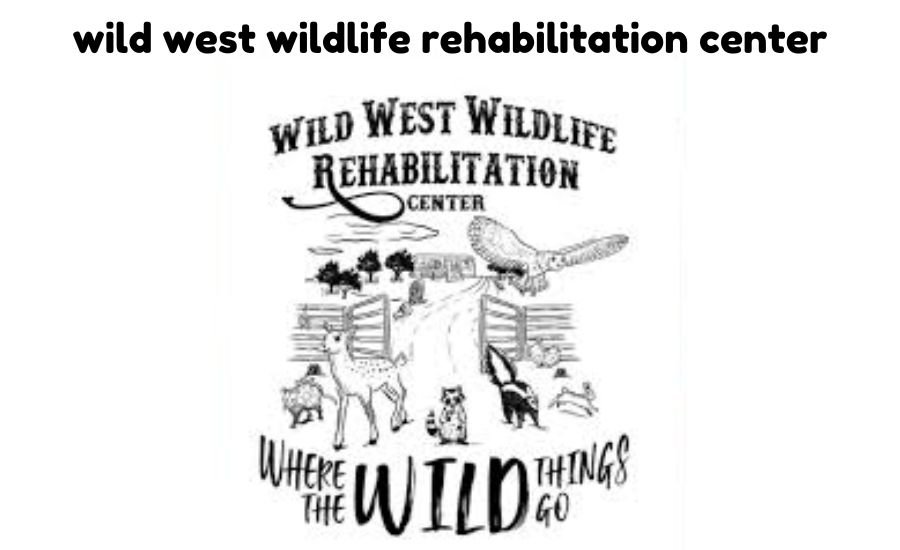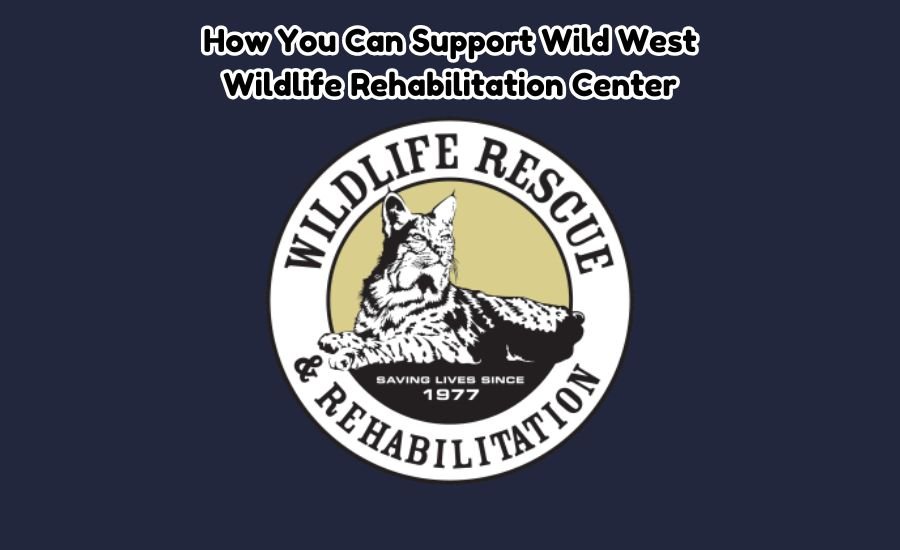Wildlife plays a crucial role in maintaining ecological balance. However, animals often face dangers such as habitat loss, accidents, and human interference. Wild West Wildlife Rehabilitation Center is dedicated to rescuing, treating, and rehabilitating injured and orphaned animals. This center provides professional care, ensuring that animals can return to their natural habitats safely.
The center follows ethical and scientific rehabilitation methods. Trained professionals and volunteers work tirelessly to offer medical treatment, nutrition, and safe environments for recovery. The Wild West Wildlife Rehabilitation Center aims to spread awareness about wildlife conservation and educate the public about the importance of coexistence with nature. Every year, thousands of animals find a second chance at life through the dedicated efforts of this center.
Services Offered by Wild West Wildlife Rehabilitation Center

Animal Rescue and First Aid
The center rescues injured, sick, and orphaned animals. A trained team assesses each case, providing immediate medical attention. Whether a bird with a broken wing or a fawn separated from its mother, Wild West Wildlife Rehabilitation Center ensures every animal receives appropriate care.
Animal rescue requires quick action and precision. The team is available 24/7 to respond to emergency calls, ensuring that animals receive timely assistance. Wildlife experts carefully transport animals to the rehabilitation center, where they undergo a thorough medical evaluation. Depending on the severity of their condition, they may require specialized care, such as surgery, medication, or intensive therapy.
Veterinary Treatment and Rehabilitation
Animals need specialized care to heal properly. Veterinarians at the center diagnose health issues and provide treatments, including surgeries, wound care, and nutritional support. The rehabilitation process involves physical therapy, gradual exposure to natural settings, and behavioral assessments.
Each animal’s recovery journey is unique. Some animals may take weeks to heal, while others require months of dedicated care. During the rehabilitation phase, staff members observe the animals closely, ensuring that they regain strength and develop survival skills. The ultimate goal is to prepare them for reintroduction into the wild, where they can thrive independently.
Public Education and Awareness
Educating the public about wildlife conservation is vital. The center organizes workshops, school programs, and community events to teach people about animal welfare. Awareness campaigns highlight responsible human behavior towards wildlife and ways to protect natural habitats.
Through interactive sessions, visitors learn about the common threats that wildlife faces and the importance of protecting ecosystems. The Wild West Wildlife Rehabilitation Center encourages people to take small steps in their daily lives to contribute to conservation efforts. Simple actions such as avoiding littering, planting trees, and reporting injured animals can have a significant impact on preserving wildlife.
Release and Post-Release Monitoring
Once animals recover, they are released into suitable environments. The Wild West Wildlife Rehabilitation Center ensures that each release follows a structured process. Post-release monitoring helps track the progress of rehabilitated animals, ensuring their successful adaptation to the wild.
Before release, animals undergo a series of assessments to determine their readiness. Factors such as their ability to find food, avoid predators, and integrate with other animals are carefully analyzed. The center also uses GPS tracking and observation techniques to monitor released animals, ensuring they transition smoothly into their natural habitats.
Commonly Rescued Animals at Wild West Wildlife Rehabilitation Center
The center rehabilitates a wide range of animals, each requiring unique care. The table below outlines some commonly rescued species and their rehabilitation needs:
| Animal Type | Common Injuries | Rehabilitation Process |
| Birds (eagles, owls, hawks) | Broken wings, dehydration | Medical treatment, wing therapy, soft release |
| Mammals (foxes, raccoons, deer) | Orphaned, trauma, poisoning | Nutritional support, behavioral training, habitat preparation |
| Reptiles (turtles, snakes) | Shell fractures, burns | Surgery, protective enclosures, natural adaptation |
Wildlife rehabilitation requires expertise and patience. Each species has different dietary, medical, and environmental needs. The Wild West Wildlife Rehabilitation Center customizes treatment plans to ensure the best outcomes for every animal.
How You Can Support Wild West Wildlife Rehabilitation Center

Volunteering Opportunities
Becoming a volunteer allows individuals to actively participate in wildlife care. Volunteers assist with feeding, cleaning, and monitoring animals. Training sessions help them understand wildlife behavior and ethical rehabilitation practices.
Volunteers also play a crucial role in education and outreach programs. By interacting with visitors and sharing knowledge, they help spread awareness about wildlife conservation. The center provides hands-on training to ensure that volunteers can handle animals safely and effectively.
Donating for Wildlife Care
Donations provide financial support for medical treatments, food supplies, and facility maintenance. The Wild West Wildlife Rehabilitation Center accepts monetary contributions, as well as food, medical supplies, and equipment for animal care.
Every donation, no matter how small, contributes to the center’s mission. Funds are used to purchase essential medicines, construct better enclosures, and improve rehabilitation facilities. Donors can also sponsor the care of specific animals, receiving updates on their recovery progress.
Spreading Awareness
Sharing knowledge about wildlife rehabilitation helps in conservation efforts. Schools, communities, and social media platforms can promote the center’s mission and educate people about responsible wildlife interaction.
Public awareness is key to preventing wildlife injuries in the first place. By educating others about the dangers of habitat destruction, pollution, and illegal poaching, people can take collective action to protect vulnerable species.
Impact of Wild West Wildlife Rehabilitation Center
The center has positively impacted countless lives, saving injured animals and fostering a harmonious relationship between humans and wildlife. Some key achievements include:
| Year | Number of Rescued Animals | Successful Releases |
| 2020 | 500 | 400 |
| 2021 | 700 | 600 |
| 2022 | 900 | 850 |
Over the years, the Wild West Wildlife Rehabilitation Center has expanded its reach, rescuing more animals and improving survival rates. With advanced medical techniques and better rehabilitation strategies, the center continues to grow and enhance its services.
Conclusion
The Wild West Wildlife Rehabilitation Center plays a vital role in protecting and rehabilitating injured wildlife. Through medical care, public education, and conservation efforts, the center helps animals recover and return to the wild. Supporting the center by volunteering, donating, or spreading awareness can contribute to preserving wildlife and ensuring a safer environment for all living beings.
Wildlife rehabilitation is not just about saving individual animals; it is about protecting entire ecosystems. Every rescued animal plays a part in maintaining biodiversity, and the Wild West Wildlife Rehabilitation Center is committed to ensuring that wildlife continues to thrive for future generations. By working together, we can create a world where humans and wildlife coexist in harmony.
What You Should Know: Wildlife-specialist-passionate-experts
FAQs
What is the Wild West Wildlife Rehabilitation Center?
It is a rescue and rehabilitation center dedicated to treating injured, sick, and orphaned wild animals before releasing them back into their natural habitats.
What types of animals does the center rescue?
The center helps birds, mammals, and reptiles, including eagles, deer, foxes, raccoons, turtles, and more.
How does the center rehabilitate animals?
It provides medical care, physical therapy, behavioral training, and gradual exposure to natural environments to prepare animals for release.
Can I visit the Wild West Wildlife Rehabilitation Center?
Yes, the center welcomes visitors for educational tours and workshops to promote wildlife conservation awareness.
How can I help the Wild West Wildlife Rehabilitation Center?
You can volunteer, donate money or supplies, and spread awareness about wildlife conservation.
Does the center accept injured animals from the public?
Yes, but it’s important to contact the center first for guidance on safely transporting the animal.
What happens if an animal cannot be released back into the wild?
Non-releasable animals may be placed in sanctuaries, educational programs, or specialized care facilities.
How does the center ensure animals adapt after release?
Post-release monitoring, including tracking and observation, ensures animals successfully transition into the wild.
Are donations tax-deductible?
Yes, most donations are tax-deductible, as the center operates as a non-profit organization.
Why is wildlife rehabilitation important?
It helps restore balance in ecosystems, saves species from decline, and educates people about the importance of protecting wildlife.